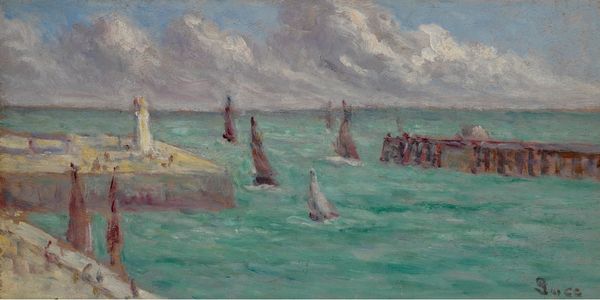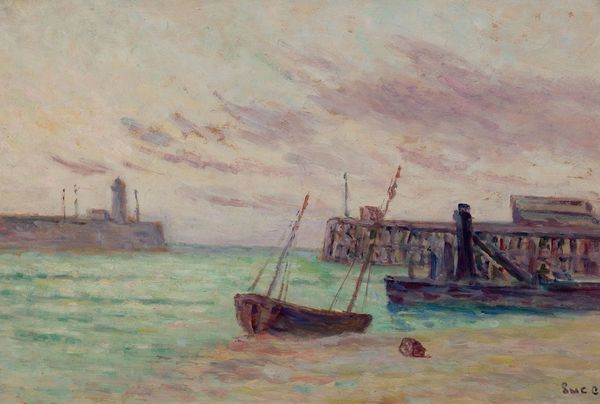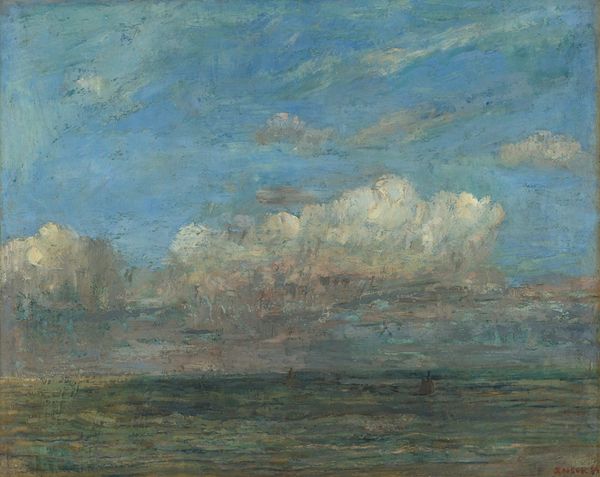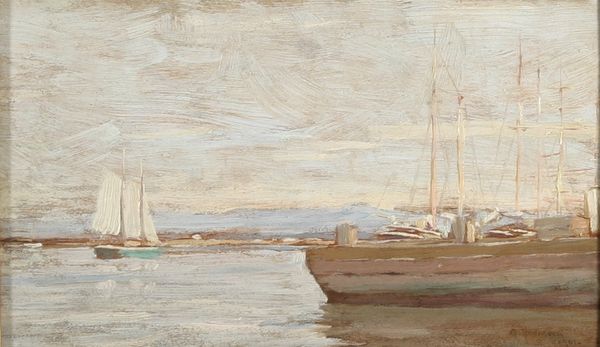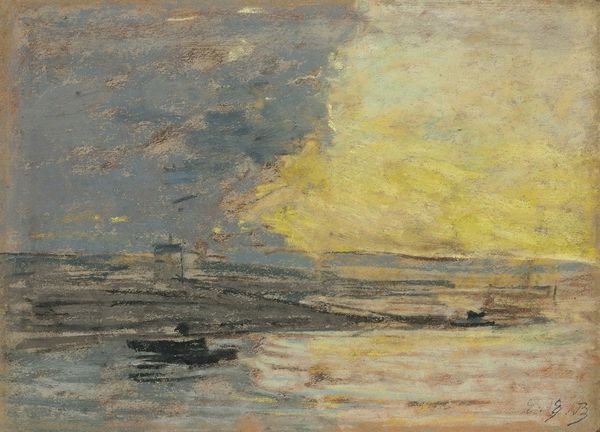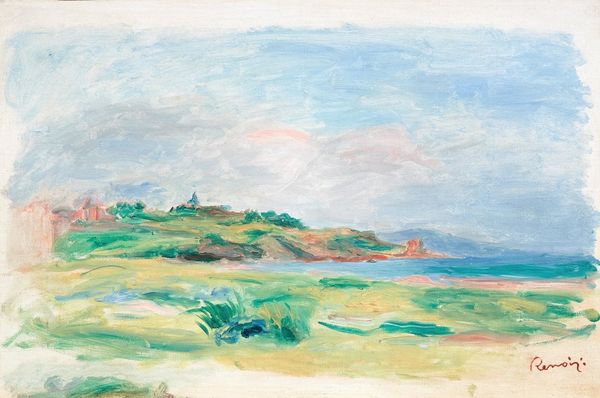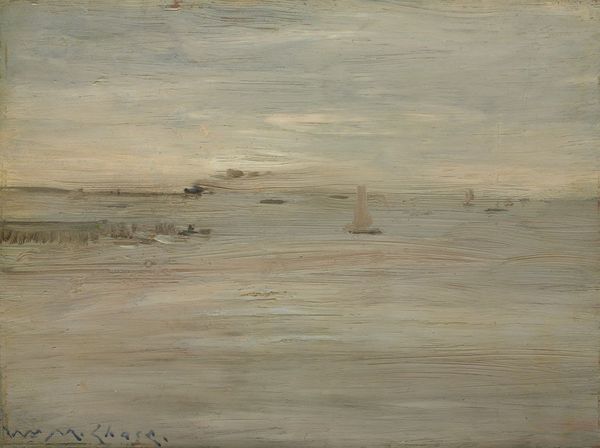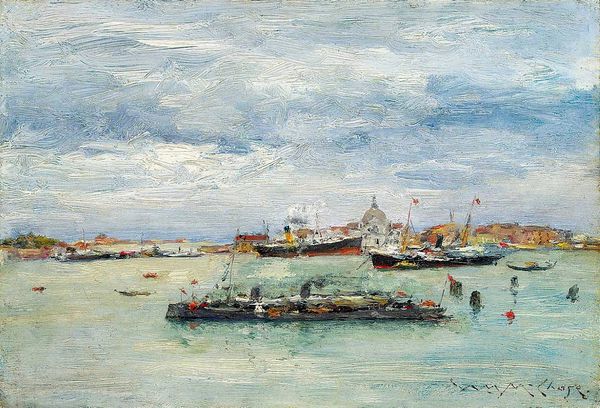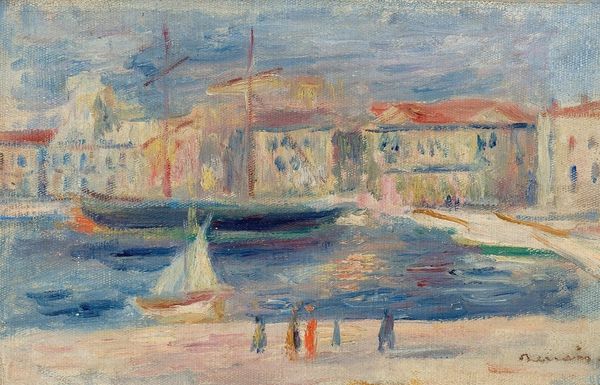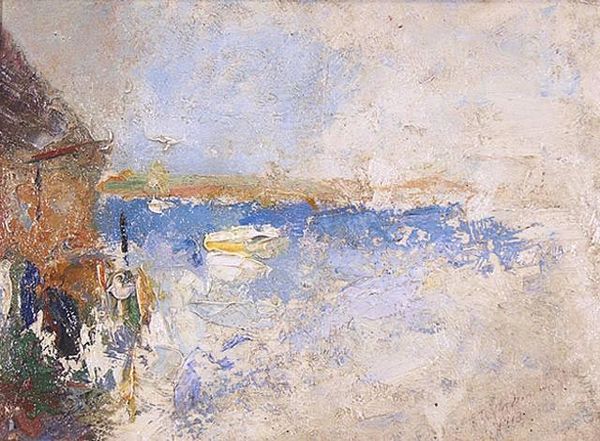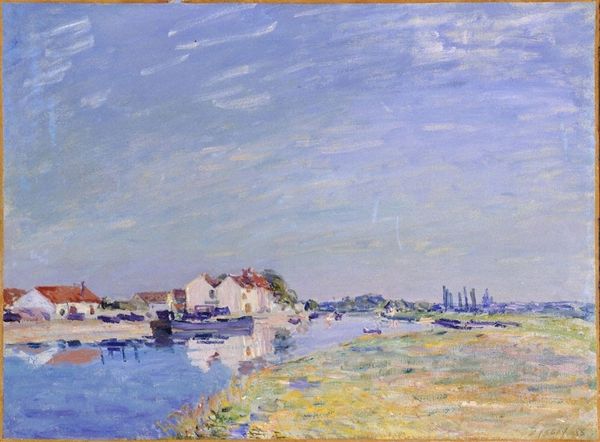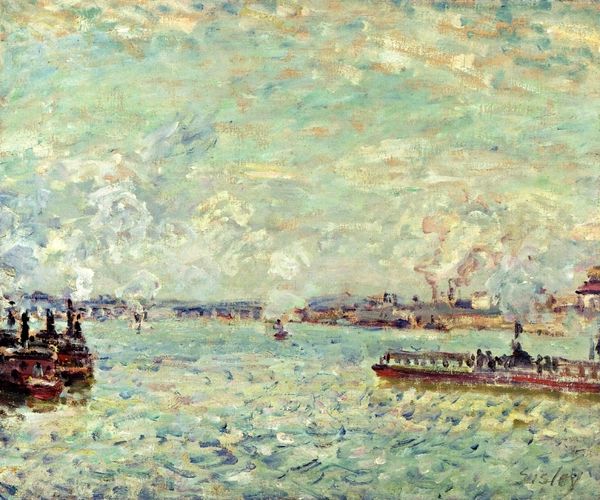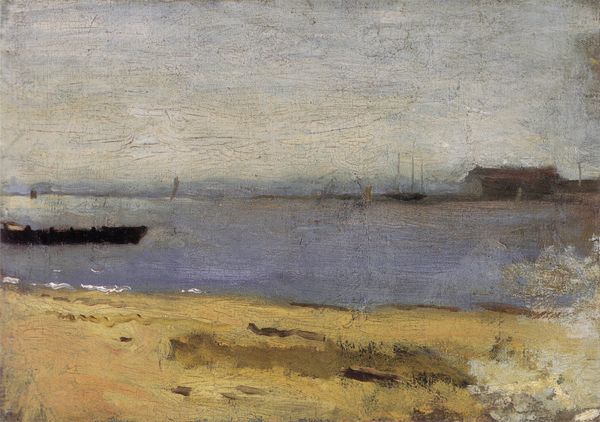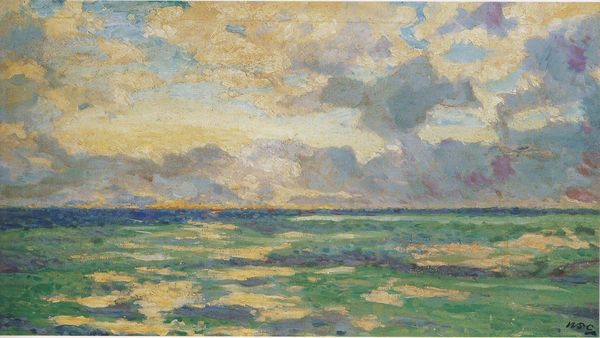
Copyright: Public domain
Curator: What a wash of cool color. It’s almost entirely sea and sky, a very subdued palette overall. Editor: This is Maximilien Luce's "Vue De Paramé," painted in 1935. Luce was a prominent figure in the Neo-Impressionist movement, closely associated with artists like Signac and Pissarro, known for their explorations of light and color and radical politics. This work, however, seems softer, less overtly political. Curator: Radically subdued perhaps? Even in a cityscape, the urban elements seem muted, secondary to the atmospheric effects. Note how the brushstrokes aren’t trying to define detail but to convey the general impression of a seaside locale. Editor: Yes, the Neo-Impressionists’ concern for depicting modern life gave way to a celebration of nature here. He produced it 'en plein air,' so Luce certainly aimed to translate what he experienced directly in nature—the changing light and atmosphere are prioritized over topographical accuracy. Curator: Observe closely how that sky meets the water; there’s a distinct lack of hard edges. Everything blends seamlessly. Is there any real evidence of depth? He makes the far buildings just an extension of the ocean through this painting technique. Editor: The brushwork reflects the period’s turn to subjective expression, although this aesthetic choice arguably softens the class consciousness often explored in the earlier Impressionist representations of the urban milieu and working classes. The period right before WWII experienced this turn to introspection, though that's for someone else to explore. Curator: True. But in its own right, its masterful orchestration of subtle shades creates a rather compelling mood, a melancholy meditation almost, reflecting maybe the calm before a storm. Editor: Well said. So much is conveyed with such elegant and restrained brushwork, speaking of the passing moment while simultaneously capturing that location.
Comments
No comments
Be the first to comment and join the conversation on the ultimate creative platform.
